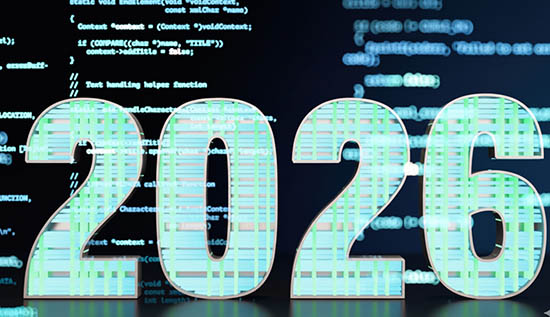Do You Know Edge Computing is an Extension of Which Technology?

See how edge computing transforms latency-sensitive applications, from smart cities to autonomous systems.
Both companies and people try to process and evaluate data faster than ever before in the constantly changing technology scene of today. Edge computing is among the most revolutionary ways to get at this.
But what is edge computing, and why is it being heralded as the next great innovation? Providing a comprehensive picture of edge computing's possibilities, this paper investigates its underlying technology, practical uses, and current developments.
What Is Edge Computing?

Edge computing is a distributed computing model whereby data is handled either at or close to the generation site. Edge computing pushes computational activities closer to the "edge" of the network, unlike conventional cloud computing in which data is transported to centralized data centers for processing.
This closeness lowers the bandwidth needed to move data to far-off computers, speed’s reaction times, and lowers latency.Edge computing is now much more important given the Internet of Things (IoT), artificial intelligence (AI), and other data-intensive technologies.
Edge computing guarantees real-time insights and action by local data processing; thus, it is absolutely essential for sectors including healthcare, manufacturing, retail, and transportation.
Edge Computing Is an Extension of Which Technology?
Understanding that edge computing is a development of cloud computing helps one to completely grasp the idea. Through scalable and centralized resources, cloud computing transformed our storage, processing and also management of data.
But the volume of data produced by linked devices has exploded along with their number. High costs and delay problems may result from sending this data to centralized clouds for processing.
Edge computing spreads the processing load therefore bridging this divide. By building smaller, localized data centers near data generation, it enhances cloud computing. Working with the cloud, these small data centers also known as edge nodes offer a flawless quick system for managing massive processes.
What Underlying Concept Is Edge Computing Based On?
What underlying concept is edge computing based on? Edge computing's basic idea is decentralization. Large data centers have long housed centralizing data processing and also storage. Although centralizing is not best for situations needing real-time data processing or low-latency responses, it is great for some uses.
Edge computing turns the emphasis from a centralized to a distributed architecture. It reduces the time and resources required to send data across great distances by processing data closer to its source whether on a manufacturing floor, in a retail store, or within an autonomous car. Faster insights, better security and less need on bandwidth-intensive connections are guaranteed by this distributed method.
Resources' efficiency is another fundamental idea. Its lessens the pressure on centralized systems by processing data locally, therefore enabling more environmentally friendly and cost-effective operations generally.
Which Factors Have Made Edge Computing Cheaper and Easier?
Several technical and commercial factors have led to the rising cost and also accessibility of edge computing:
Advancements in Hardware: storage devices, sensors and CPUs now cost far less. Energy-efficient, small-sized chips let devices run complicated calculations locally.
Proliferation of IoT Devices: The rise of IoT devices has raised the need for local processing capability. Economies of scale brought about by this demand help to lower costs.
Improved Network Infrastructure: such as 5G has lowered latency and enhanced connection, therefore making edge installations more sensible and effective.
Open-Source Software: platforms have reduced development costs, therefore allowing companies of all kinds to use edge computing technologies.
- Edge-Specific Cloud Services: Leading cloud providers today provide customized edge solutions that easily interact with current systems, therefore lowering the deployment complexity.
Edge Computing Examples in Real-World Applications
Edges computing's adaptability and utility have seen it used in many different sectors. Here are some edge computing examples below:
- Healthcare: Edge computing is applied in modern hospitals to real-time analysis of patient data from wearable sensors and also monitoring. For example, by allowing quick medical action, early detection of irregular cardiac beats can literally save lives.
- Retail: Retailers use edge computing through smart shelves, real-time inventory control and also tailored promotions to improve customer experiences. Locally analyzing in-store consumer behavior improves productivity and helps to lower weights.
- Manufacturing: Edge computing is used in factories for predictive maintenance, that is, data analysis of sensor-based equipment to identify possible breakdowns before they start.
- Autonomous Vehicles: Self-driving cars mostly rely on edge computing to handle LiDAR sensor, radar and camera data. Localized processing guarantees split-second judgment needed for safe navigation.
- Smart Cities: Edge computing drives smart city uses including traffic control, public safety, and energy optimization. For real-time congestion management, traffic cameras, for instance, handle data locally.
What Is a Recent Innovation in Edge Computing Enhanced by 5G?
The launch of 5G technology has greatly enhanced the edge computing capacity. Multi-access Edge Computing (MEC) is one especially innovative concept. MEC enables ultra-low latency and fast data transfer by bringing computer capability and also storage proximity to mobile consumers.
MEC is transforming the gaming industry, for example, by enabling zero latency cloud-based gaming environments. Gamers would value fast high-performance graphics even on mobile devices. Similarly in the industrial sector, 5G-enabled edge computing makes real-time machinery monitoring and also control possible, thereby enabling smarter manufacturing.
Still another amazing development is the intersection of edge computing and artificial intelligence. Edge-AI devices enable to reduce dependency on the cloud by local data processing and analysis. Depending on this technology are applications ranging from real-time translating to fraud detection and facial recognition.
What Would Be an Ideal Scenario for Using Edge Computing Solutions?
Edge computing should be used when handling data consistently and fast to maximize its benefits. Edges computing is absolutely necessary in these few instances:
- Emergency Services: Edge computing helps first responders better coordinate and also make decisions during disasters and also emergencies by letting them view and also analyze important data on-site.
- Remote Locations: Edge computing lets you process and store data locally, even in places where internet access is limited or unreliable. This keeps your business running smoothly.
- Real-Time Analytics: Instant data processing is needed for tasks like video security, finding fraud, and trading stocks. Edge computing makes sure that these tasks are done quickly and correctly.
- Self-Driving Systems: Edge computing lets self-driving cars, drones and also robots make decisions in real time, without having to wait for data to be sent to central computers.
- Personalized Experiences: Edge computing lets you give each customer a unique experience by studying user data close to them. Smart home gadgets can, for example, change based on what the user wants without sending information to the cloud.
The Future of Edge Computing
Edge computing is destined to become ever more important as businesses keep embracing digital transformation. Edge computing along with technologies such as 5G, artificial intelligence, and also IoT will open new opportunities allowing companies to develop faster and also run more effectively.
Still, difficulties abound. Important areas needing effort are managing dispersed systems, guaranteeing data security and standardizing edge computing architectures. Edge computing can reach its full potential by tackling these obstacles, therefore transforming sectors and enhancing lives all around.
Read More: The Future of Cutting-Edge Technology in 2025
Conclusion
Ultimately, edge computing offers distributed, real-time processing capability where it is most needed, therefore reflecting a logical development of cloud computing. As hardware, network architecture, and software develop, the technology is becoming more reasonably priced and accessible.
Edge computing finds wide and transforming applications from smart cities to driverless cars. The question is not whether edge computing will define the future—it's rather how quickly it will transform the present as companies and people choose edge solutions.
Read More: The Benefits of Cloud Computing for Cambodian Startups
More Articles
 12 Dec 2025
12 Dec 2025
Top Programming Languages to Learn in 2026
Updated overview of top programming languages to learn in 2026 focused on growth potential, developer pathways, industry needs and real applications.
 11 Dec 2025
11 Dec 2025
Deep Learning Video Editing: AI-Powered Post-Production
Deep learning video editing brings advanced automation and AI precision to modern post-production, giving creators smoother, smarter ways to shape video content.
 10 Dec 2025
10 Dec 2025
Latest Freelancing Trends in Technology for Remote Work
Stay ahead in remote work with insights on Freelancing trends in technology, top skills and global technology freelance opportunities.
 10 Dec 2025
10 Dec 2025
Cloud Disaster Recovery Planning for Business Continuity
Cloud Disaster Recovery Planning helps businesses stay resilient with clear strategies that reduce downtime and protect critical operations.